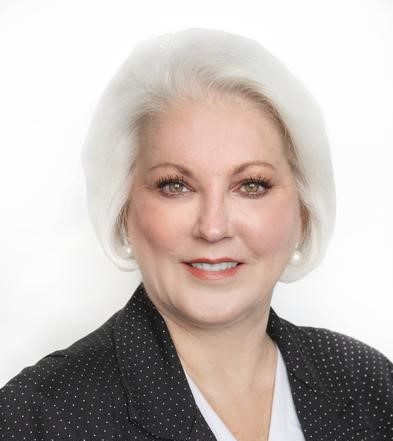Have you ever looked out your clinic window on a nice day and wished you could smuggle yourself outside for just an hour? Does it sometimes feel like moving a mountain to organize an hour to go to a doctor’s appointment? Who doesn’t want more time away from the office or crowded hospital? Who wouldn’t prefer having more ability to make their own decisions when it comes to work schedules and how your practice conducts its business? Flexibility and getting away from the office are just two reasons why a growing number of veterinarians are making the jump to mobile practice, in some cases leaving the traditional brick-and-mortar practice behind entirely. Perhaps the rise of corporate consolidation, compassion fatigue and the need for greater work-life balance are additional factors driving a sub-set of the profession to consider a different way.
Hitting the road as a mobile practitioner can have a number of benefits but, like everything else, there are also downsides to consider: gas prices, lower revenues, longer days and, of course, traffic! Still, the practice model continues to expand, with a growing number of small animal veterinarians making the switch to a model previously dominated by large animal practitioners. This article will explore some of the complex issues and logistics – along with advantages and disadvantages – that come with this practice model. That’s because, when considering whether mobile practice is the right next step in your career, or if it’s a viable service to add to your existing practice, it’s important to delve beyond the obvious. Now that you’re daydreaming of hitting the road, let’s examine things on a deeper level.
Making the Finances Work
The decision to go mobile must make financial sense. Indeed, this is the barrier most veterinarians see as a road block. Mobile practice, however, is not unlike any other business where viability and profitability come down to expense and revenue. To see if your vision can become a reality, first create a detailed business plan.
Expenses
A recent article in Veterinary Practice News found the cost of starting a stationary small animal clinic to be approximately $1,000,000 (including most standard equipment). However, a mobile clinic startup cost was estimated to be roughly $250,000, a quarter of the price. Obviously, the equipment you choose, real estate pricing and the scope of your practice all have a significant bearing on the initial startup costs, but there is no denying mobile has a much smaller buy-in. Today’s vet school graduates are likely to have upwards of $135,000 of debt associated with their education, according to recent AVMA data, making investing in a mobile practice seem a more practical choice. As a mobile practitioner, your investment is not subject to all the forces that affect a real estate holding. With brick and mortar, if the neighborhood takes a turn for the worse or you have a dispute with a neighbor, you’re locked in for the long haul. As a mobile clinic, though, you are at the whim of gas prices. Currently gas prices are $2.09/gallon, a significant expense in a vehicle likely to get poor mileage per gallon – and fluctuations in gas prices will also include upward ones, adding to the expense.
Will you be a small, large or mixed animal practice? What are the needs of your intended service area? Understanding your market and where your revenue streams are likely to come from will determine what set up is best for you. Many would argue that having a 26-foot vehicle may not make sense if you only intend to see mostly horses. However, if you are a small animal practitioner and plan to provide a standard of care that is similar to stationary practices, bigger may be better. You may wish buy a larger vehicle to accommodate a dental unit, x-ray equipment and surgical suite. Several companies offer ranges of options for veterinarians from built-ins for trucks and SUVs to vehicles with more square footage than your apartment in vet school. Keep in mind that, as a small animal practitioner, what you gain in fuel efficiency (cost) with an SUV versus 26-footer, you may lose in revenue, having to refer to local practices for anesthetic procedures, radiographs and so forth.
The average monthly expenses as reported in a survey conducted by LaBoit, Inc., a mobile unit manufacturer, were estimated at $6,050 to include vehicle payments, service of vehicle, fuel costs, insurance, supplies, cell line, advertising, pharmacy and professional services. That’s a yearly cost of roughly $72,600. However, this estimated cost does not factor in the most significant expense of any hospital budget: staff salary (including yourself) and benefits. Most mobile practitioners choose to have an assistant to help answer calls, schedule appointments, maintain the vehicle, and various other tasks that work to increase practice efficiency and decrease veterinary exhaustion. As a start, consider two salaries: a veterinarian (you) and a technician. The national median salary for a veterinarian is $87,590 and, for a technician, the average salary is $31,070. To more closely approximate actual cost per employee, it is recommended to multiply salaries by a factor of 1.5 to include benefits and other employer costs. Then there are practice insurance policies, marketing, taxes, accountant fees and possibly fees for a payroll service.
On the upside, mobile practices have the added perks of no property taxes and no rent! Purchase of larger veterinary mobile units comes with the benefit of free marketing as you are essentially driving a billboard around all day. If the schedule is open, strategic parking can result in high visibility and real bang-for-the-buck marketing.
Revenue
Territory
How wide of an area will you cover? This is paramount when establishing your business plan. If you plan to cover a large swath of a county, you’d better have either a fuel efficient vehicle and/or a higher than average client transaction to counter the simple fact that a larger area means more transit time. Maybe you can serve a large area but only visit the northern part of the county on Mondays and Wednesdays, and book the southern part on Tuesdays and Thursdays. Not unlike your traditional stationary clinic, there must be sufficient population to not only support but to grow the practice over time. The beauty of mobile practice, though, is that you can go where the clients are and you have the freedom to refine your territory for maximum efficiency.
House-call Fees
According to an informal survey of mobile practitioners who purchased units from LaBoit, Inc., the average house call fee was $50. It should be noted that this fee is assessed to clients for your driving to them and the convenience that provides. Some practitioners develop a stratified house call fee schedule based on the amount of miles a call would be from a central location on a map.
House call fees may highlight another difference between large animal and small animal mobile clientele. A large animal client may view you driving to them as a necessity, not a convenience, making a $50 to $60 fee unpalatable to some. If you are planning to offer small animal service, understand that the cost of the practice model must be shifted to the clients, so be sure the market you serve would tolerate the $50-$60 more per transaction that is necessary to offset the cost of keeping gas in the tank.
Let’s do some math:
Days of operation X average transactions X number of clients per day X weeks in a year = average gross revenue
If we fill in numbers reported in the LaBoit survey, we get:
5 days/week X $250 average transaction X 5 clients/day X 50 weeks/year = $312,000
While this number may be underwhelming when you look at revenue from a multi-doctor stationary practice, the key is of course to consider the other factor in determining profit: cost.
$312,000 revenue – 250,590 cost = $61,410 profit
You must also have a realistic financial project that accounts for building a client base from zero. If your projections are accurate and the business is able to stick to the budget in your business plan, you should have some profit left to reinvest in your practice. Maybe you purchase a new piece of equipment, invest in marketing or reinvest in staff.
Form a Business Entity
The rules and tax benefits that govern what type of business entity you may wish to form varies from state to state. In some states – California, for example – veterinarians are not allowed to operate as a limited liability company (LLC) or a limited liability partnership (LLP). As such, California veterinarians form entities such as a sole proprietorship, partnership or corporation, under which they conduct business. Forming a corporation can protect its owner(s) or shareholders from being personally liable for any corporation obligations, liabilities and/or debts. The two main flavors of corporations are “C” and “S” corporations. With an “S” corporation, in the event of practice sale, there is only one tax levied upon the sale, whereas with a “C” corporation the sale is double taxed. For these reasons, the great majority of veterinarians choose to form “S” rather than “C” corporations. It is imperative to seek out the advice of a knowledgeable corporate accountant on which business entity is best for you.
Financing the Operation
Veterinarians often need to seek out loans to finance this operation. This is when a well laid out business plan can really help, as it provides the critical information lenders need to assess the viability of your business and your ability to pay them back. If you have less than 20% of the total cost in your own funds to contribute, you’ll likely need an SBA lender. Depending on your personal financial profile, credit history and business experience, the amounts, rates and terms will vary. In addition to financing through veterinary lenders, (Live Oak, B of A, Wells Fargo), many of the companies that manufacture mobile veterinary vehicles have financing programs in place. You can also investigate local lenders and private investors. It’s important to shop around for the best interest rates and terms for your loan to help bolster the short and long term financial projections. LaBoit, Inc., Dodgen, Bowie, Magnum and Faber are the major players serving the mobile vet market with custom built vehicles.
Other Startup Costs
Initial supply orders can be a heavy upfront cost in any startup, but luckily many vendors offer discounts and payment plans that help with cash flow early on. Regardless of the size and scope of your mobile practice, your initial order will be a fraction of that expected in most stationary clinics. A survey of mobile veterinarians published in DVM360 listed the equipment considered essential to mobile veterinarians, which included: digital scale, portable x-ray machine, portable ultrasound machine, centrifuge and dental equipment. Some of these may come with your custom built unit and be included in the price, while others will need to be separately financed. As a rule of thumb, a startup practice should be able to generate a positive cash flow by about the sixth month.
Insurance, Permits and Paperwork
The AVMA PLIT website has a list of insurance policies packaged for mobile practitioners. For the most part, policies such as workers compensation and employment practices liability are similar to those recommended in stationary practice. Having business/commercial auto insurance is essential in protecting your investments and allowing company employees to drive the vehicle. A general business owner (BOP) policy will protect personal business property in your home, vehicle and temporary off-premise sites like client’s homes. A BOP policy will also cover general liabilities not covered in auto, malpractice or employer coverage.
A business license, DEA license, current state veterinary license and, in some states, controlled drug license are required for mobile practices. A veterinary premise permit may be required, depending upon the state you intend on practicing in: for example, California, Florida and Arizona, among others. The laws governing DEA licensing and veterinary medicine are often a bit gray. Some hospitals will have one DEA license under which associates prescribe drugs within the practice. In the case of mobile practice, you will either be a solo practitioner or likely to not always be present when an associate prescribes/uses drugs, making it a necessity for each DVM to have a DEA license.
Taxes can be a significant drain on a small startup business. If you use your vet-mobile for a combination of personal and business use, then your mileage can be tax deductible. If you use the vehicle for business uses only, then you would not claim mileage but, rather, depreciation. Certain other expenses associated with mobile practice may be deductible, as well, such as gas and maintenance. Understanding tax benefits can be challenging and many veterinary practice owners rely on advice from their tax accountants.
Lifestyle
The appeal of being out of the hospital and owning your own practice is obvious and many mobile practitioners list one or both of these two lifestyle perks as being reasons to make the leap into mobile practice. However, there are several drawbacks to the mobile lifestyle you should consider. To serve enough clients per day to generate healthy revenue, it may be necessary to work long days or maybe six days per week. Ultimately this will depend on your fee schedule and the area you plan on servicing, but by the nature of having to drive to your clients, your efficiency will suffer.
Mobile practice can also be more physically and mentally demanding for some. Most stationary practices will offer 20- to 30-minute appointments, of which you may interact with the client for 10 to 20 minutes. In mobile practice, your appointments general run much longer (30 to 60 minutes), hence the appeal for many clients. This means you must be “on”: personable, engaged and social for up to an hour at a time with each client. If you find it difficult to make small talk and general conversation with clients, mobile practice is not for you. As a mobile practitioner, you may be called to place a catheter, draw blood, clean kennels and restrain patients for radiographs, whether or not you choose to have an assistant. Then there’s the traffic and the exhaustion of driving a huge vehicle around town, navigating narrow streets or deciding whether or not your truck will get stuck on that dirt road up ahead. Driving, jumping in and out of a truck, and carrying equipment are all part of the gig that can further contribute to an already physically demanding job, and result in exhaustion.
Having said all that, as a former mobile practitioner technician, I can tell you there is something that feels alluringly right about playing fetch with your patient for 10 minutes after catching them up on their vaccines or examining the cat from hell on the kitchen table without so much as a flick of the tail.
Market Outlook
According to recent Bureau of Labor Statistics data, the projected veterinarian employment growth rate is healthy, expecting to grow by 9% between 2014 and 20245. This rate is slightly above average expected growth for all occupations (7%), so this is the good news. The bad news is that, for young vets looking for opportunities to own a practice, inventory is limited and continues to decrease each year. With corporate consolidations up to about ten percent of the practices, the independent practitioner is forced to compete with juggernauts.
Mobile service, though, can offer clients a stark contrast to the corporate model and elevate service to a new level. Mobile care is a boutique offering with highly individualized personal care, provided by one or two faces. The mobile model may just be the antidote for corporate consolidation in some areas already dominated by giants and the best option for ownership for the next generation of entrepreneurs. The question remains: how is the market expected to grow for mobile service? A 2002 TIME magazine article noted a steadily growing number of veterinarians who are offering house calls or opening mobile services, with membership in the American Association of Housecall Veterinarians (AAHV) increasing 150% compared to the past decade. LaBoit, Inc., at that time, reported seeing sales increase 40% over each of the past five years. Unfortunately, there is little current published data specific to mobile practice, but that does not mean we can’t assess clients demand for this service.
In 2015, it became official: the millennials have taken over. That is, a Pew research poll indicates millennials are now the largest living generation. What does this have to do with mobile practice, you may ask? A recent study conducted by Trone Brand Energy published in DVM360 shows that 59% of millennials say their veterinarian takes the time to know them, compared with 64% of boomers. The study shows that millennials are less likely to think their veterinarians are very accessible (47%) compared to boomers (78%). Taken together, this suggests that this demographic is looking for accessibility and desires a more personal relationship with their veterinarian to develop a bond of trust.
Another Pew poll found that more than half (53%) of all working parents with children under 18 say it’s very difficult to balance job responsibility with responsibilities to the family. Mobile practice offers a solution. You can have your family pets’ health care needs met while you make dinner or when the new baby goes down for a nap. The client is waiting at home for their appointment and can work, do laundry or cook while they wait. Here, a choice no longer has to be made between the responsibilities to their pets’ health and life’s demands. Is it worth an extra $50 to a mother with three kids to get the two dogs and the cat a medical visit without having to load everyone up into the minivan? Many families would say: absolutely.
Furthermore, since the advent of the internet and the tremendous access to information, today’s client is often more knowledgeable. Clients feel empowered and seek more of a role in the partnership relationship they share with their veterinarians. Emphasis is on the word relationship. Clients seek transparency and active engagement in their pets’ health care. Mobile care offers more of an opportunity to build relationships with owners and to educate them. Mobile service is uniquely suited to provide transparency on both sides of the exam table. When clients can watch you work, they feel involved and can have a greater appreciation for the service you provide.
AVMA published the Bayer Veterinary Usage Study in 2011 that examined the industry’s declining revenues and number of visits (usage). The study cited what they called “feline resistance,” in which data indicated that because many cats hate being loaded into carriers for transport to the vet, 40% of them had not been to the veterinarian within the past year, as compared with 15% of dogs. Owners reported that their cats show signs of stress during veterinary visits, which lead to deferred trips. Many cat owners expressed a desire to avoid the difficulties and unpleasantness associated with bringing their cat to the veterinarian. Perhaps “feline resistance” explains why only 83% of cat owners who responded to the survey said their animal had a primary veterinary clinic, compared with 91% of dog owners. Mobile practice can help bridge this gap by alleviating the unpleasantness, providing health care to the family cat all while tapping into a sizable new revenue stream. The same concept likely also applies to fractious dogs or multi-pet households who under-utilize veterinary care simply due to stress involved with taking their pets in for an appointment.
Conclusion:
Getting into the mobile veterinary business is a creative opportunity that offers unique rewards, benefits and opportunities, along with challenges, to practice the profession you love in a whole new way. Mobile practice has a growing role to play in the profession and may represent the most viable path to ownership for the younger generation of veterinarians. Before you hit the open road, though, make sure you’ve got the right road map to guide you.









